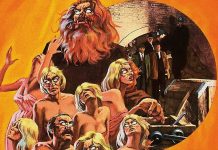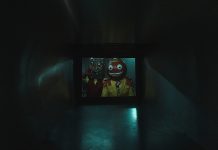Some 37 years after the inception of one of the greatest-selling toy lines of all-time, Masters of the Universe is having a renaissance. Thanks to grown-up collectors, demand has driven toy companies like Super 7 and the father of He-Man, Mattel, to produce Masters toys once again. At Power-Con, the yearly He-Man convention, a Kevin Smith=fronted He-Man anime was announced. It’s no secret that fans old and new are foaming at the mouth for new MOTU content and collectibles. While TV shows such as Netflix’s wildly popular The Toys That Made Us have touched on the history of our beloved muscle man, a complete history hasn’t been compiled – until The Power of Grayskull, that is.
A truly comprehensive documentary, The Power of Grayskull: The Definitive History of He-Man and the Masters of the Universe covers everything from the inception of the toy line to commercials, the TV series (all of them!), the ill-received 1987 movie, the birth of She-Ra, and all in between.

When Star Wars released in 1977, the resulting toy line sent a shock-wave through the toy world. George Lucas, terrified that someone would get hold of his script and steal his ideas and/or characters, refused to license the movie until months before its release. With no idea how the film (and in turn, the toys) would fare, the big companies turned the licensing rights down. The only toy company to accept the mounting challenge was a small outfit called Kenner – unbeknownst to the world, this move would change toys forever.
Feeling the burn of passing on Star Wars, Mattel was eager to find the “Next Big Thing” as far as toys went. Space was done and dusted, cowboys weren’t ready for their re-imagining – high fantasy ala Frank Frazetta was, for designer Roger Sweet and the team at Mattel, the natural next move. Eager to overshadow the fanfare of Star Wars, the race to create a line of muscle-clad heroes and bone-chilling villains was on.
The best part of Power of Grayskull is the high caliber of interviews. While most documentaries supplement heavily with “historians” or fans, Power of Grayskull lets you hear the story from the people who were there – the original artists, who showcase incredible original storyboards and drawings, former designers and animators from Mattel, voice actors (including, most notably, Alan Oppenheimer, the voice of Skeletor), and even Dolph Lundgren and Frank Langella. While Masters historians are consulted and give great insight, it’s a real treat to hear facts and trivia from the people who watched and contributed to the success of this line.

Directed and written by Randall Lobb and Robert McCallum, the documentary is paced well and transitions seamlessly between the various Masters of the Universe IPs. No strangers to the medium of documentary, Lobb was the director on the Turtle Power: The Definitive History of the Teenage Mutant Ninja Turtles doc, and has landed the job as director of a definitive Conan the Barbarian doc as well. McCallum was the director on Nintendo Quest, both the docuseries and full-length documentary, as well as the docuseries Box Art: The Stories Behind the Covers. In short, the two obviously have a pop culture niche, so the documentary feels genuine and hits the spots that true fans want because the directors understand their audience.
Due to the nature of the documentary, the meat of it is interviews and shots of original art, storyboards, scripts, etc. If you’re looking for older behind-the-scenes footage, you won’t find it – because it doesn’t exist. Living in a time period where everything is filmed and prepared to become a documentary, we are spoiled by the sheer amount of documentation that occurs on modern sets. With no knowledge that Masters of the Universe would become the force it has, there was no need to document behind the scenes. Despite this, the filmography doesn’t feel stilted or boring – certainly not, for fans who would be interested in this documentary.
Power of Grayskull is the completionists history of Masters of the Universe, perfect for children of the ’80s as well as new fans.

Related Article: The ’80s Revivalists: How We Got to Pop Culture Tipping Point














